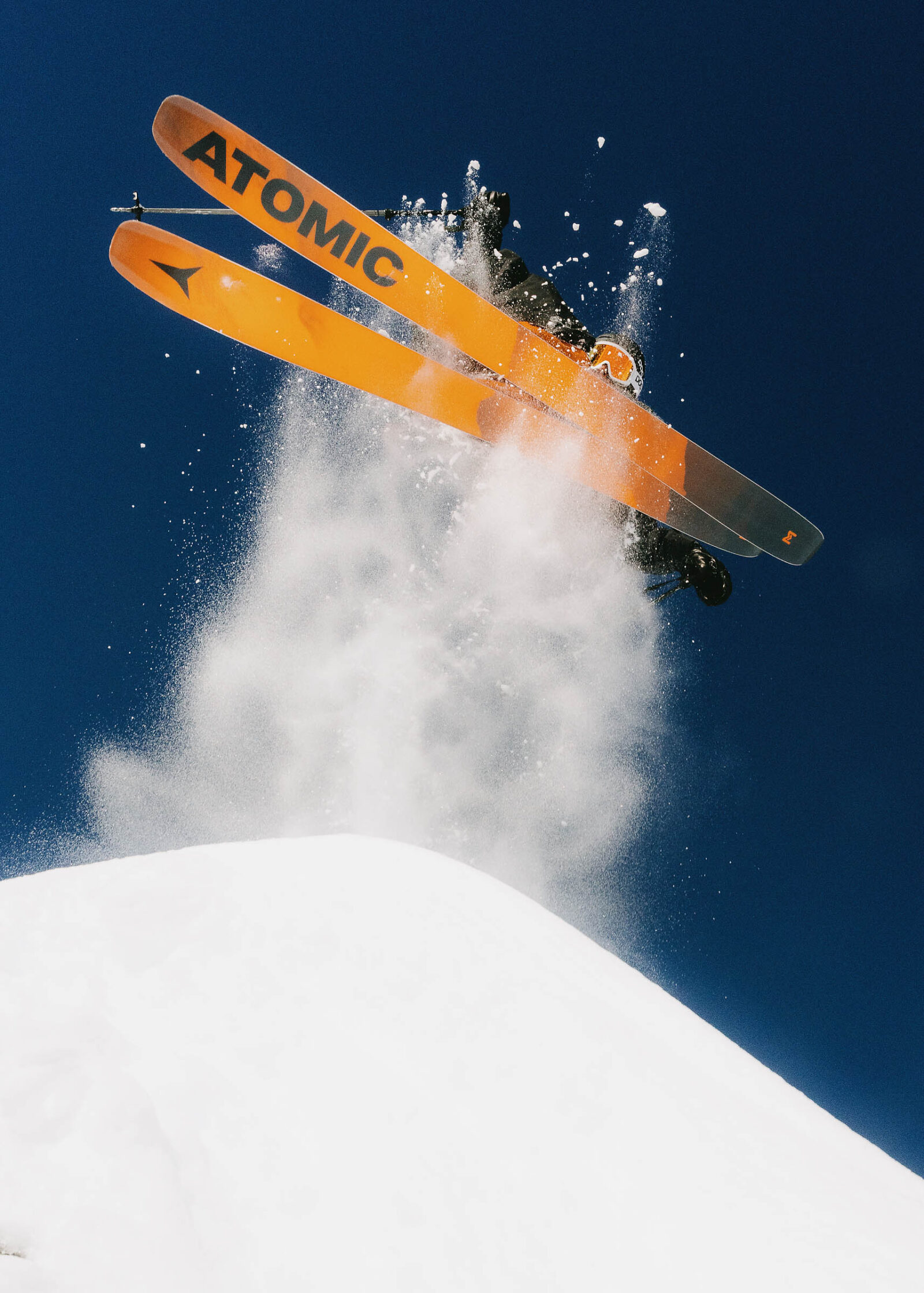Atomic revealed their lineup of freeride skis for the 2024/2025 season last week. There are three different product lines: the Bent series, the Backland series and the Maverick/Maven series. The well-known and much-loved Bent family has received some fine-tuning without major changes. In contrast, the Backland FR models are new designs, and the range is now fully focused on lighter weight to target skiers who prefer to earn their turns. Finally, the Maverick and Maven are completely new and mark a repositioning of skis under that name. Previously focused on the all-mountain segment, the brand-new Maverick and Maven are hard-charging freeride skis for true big mountain riding.
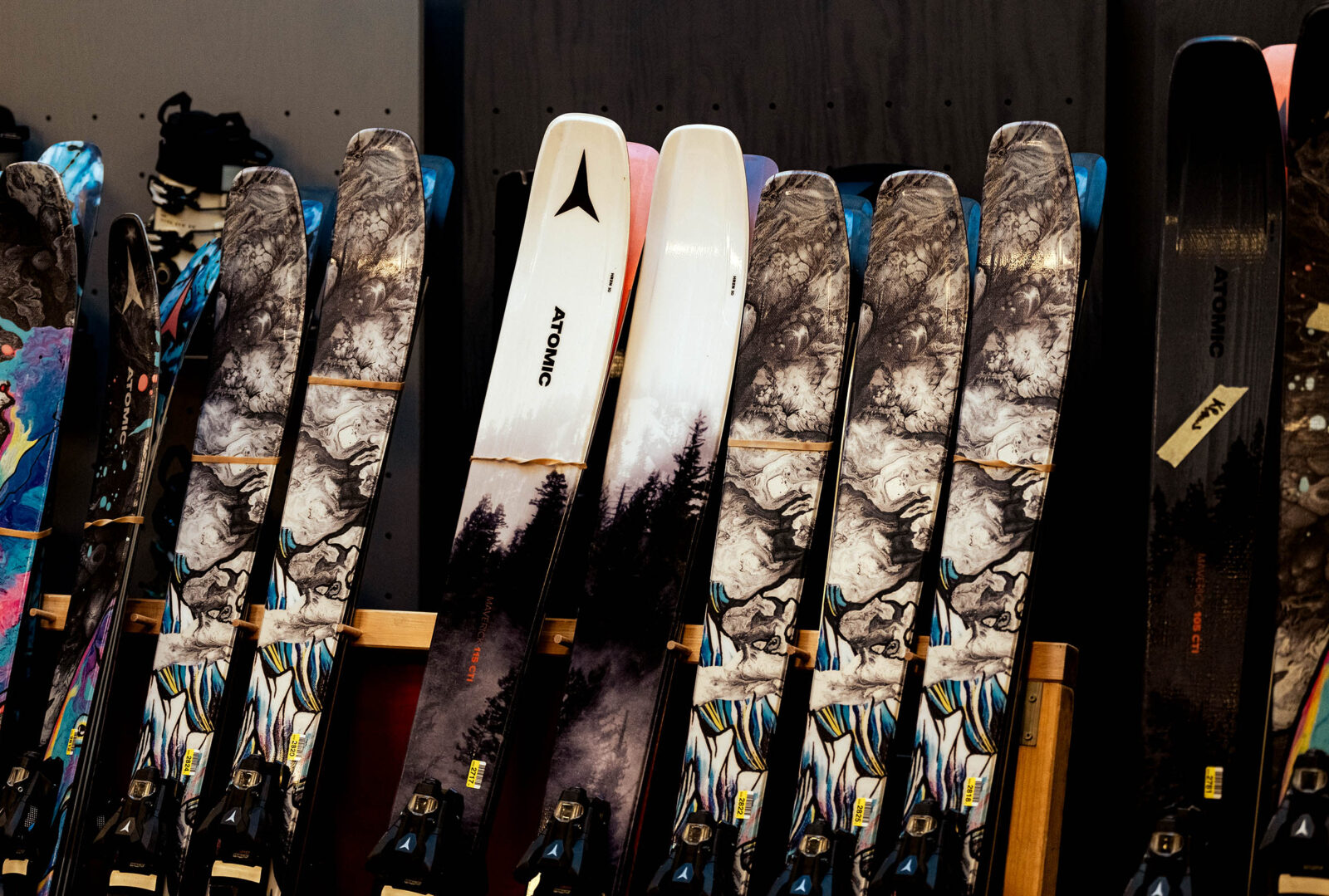
Gear
HighlightMavericks, Mavens and Backlands, oh my
Atomic announces new freeride skis lineup for 2024/2025 season
January is when ski brands announce their new models for the next season. Until a few years ago, that usually happened at the ISPO trade show in Munich, but the pandemic has effectively erased that tradition and most brands now organize individual launch events to communicate to media and retailers. For us journalists this is more time-consuming, but it also usually involves the option to try some of the new skis on snow, which is a welcome change.
One of those events happened last week in Altenmarkt, Austria at the Atomic headquarters. Unlike many other brands, the Atomic factory sits right in the middle of the mountains, and the guys at Atomic took advantage of this fact for their 2024/25 freeride launch. They gathered a bunch of media people as well as many of their team riders, presented their new skis, took everyone on a tour through the factory and treated us to a great day of skiing in neighboring Obertauern, a well-known freeride spot.
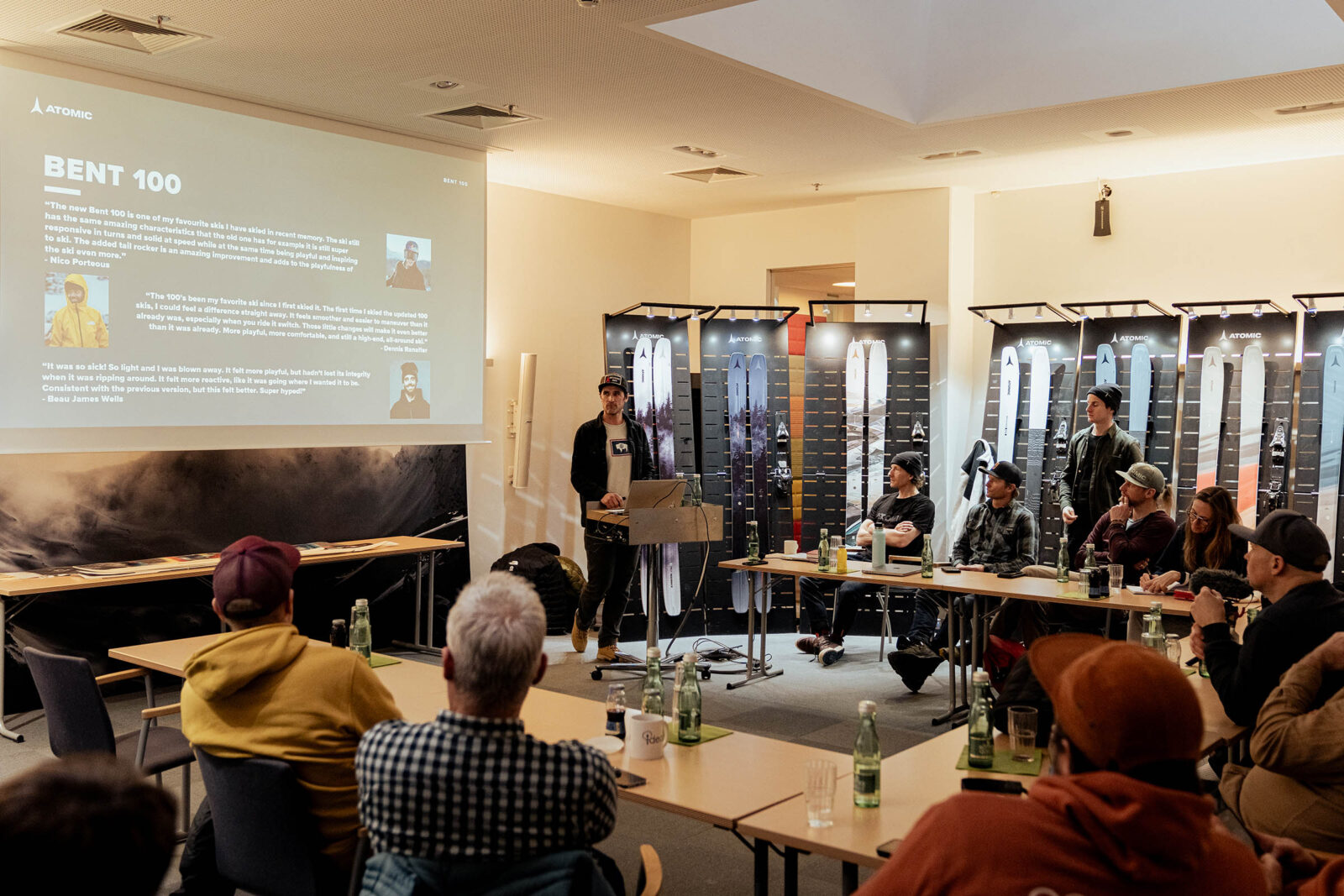
2024/25 Atomic Freeride Lineup
Let’s take a look at the facts. The biggest news is the rebranding of the Maverick and Maven names. Skiers looking for more traditional freeride skis than the Bent family were, until now, served by the Backland series, which also embraces all touring-oriented skis that take weight into strong consideration. To clarify things for consumers, skis catering to people on the hunt for a no-compromise, hard-charging freeride experience—the type of skiing that you will likely see in a freeride competition—now carry the Maverick and Maven names. In turn, the Backland range is kept exclusively for touring-oriented skis. The Bent series continues to offer platform for all kinds of off-piste riding, but always with the option to get creative like riding switch or doing tricks.
There are a few aspects that unify all Atomic freeride skis, though. One is that all ski development heavily involves the athlete team. We actually got a little insight in how that works. Every time a new ski model is requested by the product managers, the athletes are asked which direction the new model should go. Based on their opinions, the development team comes up with a prototype in one length. Several athletes then get to ski that prototype and give their feedback, leading to refinements and a new prototype. It could take everything between one to five or six different prototypes until everyone is happy and a new ski model for the brand is born. And that’s just for one length! Different lengths are then adapted from the initial prototype. Often the R&D will nail the new length on the first go, but every length is a dedicated internal design that is prototyped and tested, and may take another round of design if the first try doesn’t meet expectations.

Another common aspect for all Atomic skis: They are made in the factory at the Atomic headquarters in Altenmarkt, Austria, where they are designed and produced with sustainability in mind. The quest for sustainability starts with the factory’s own heating plant next door that’s fueled by wood chips from local saw mills, continues in material sourcing that predominantly seeks to source supplies from within Europe, and goes all the way to ski design that favors constructions which reduce the amount of materials with a high carbon dioxide footprint and strive to incorporate recycled materials as much as possible. However, that doesn’t mean Atomic compromises on product quality. In fact, sometimes the quest for sustainability brings up solutions that are even superior from a functionality standpoint. For example, in order to supply stability for mounting bindings, Atomic used to use a sheet of titanium in the center of all skis. As titanium has a rather high CO2 footprint, they looked for a different solution. Now they insert a block of denser wood into the core underneath the binding—not only eliminating the need for the titanium sheet, but even improving the stability over the prior construction by about 10%.
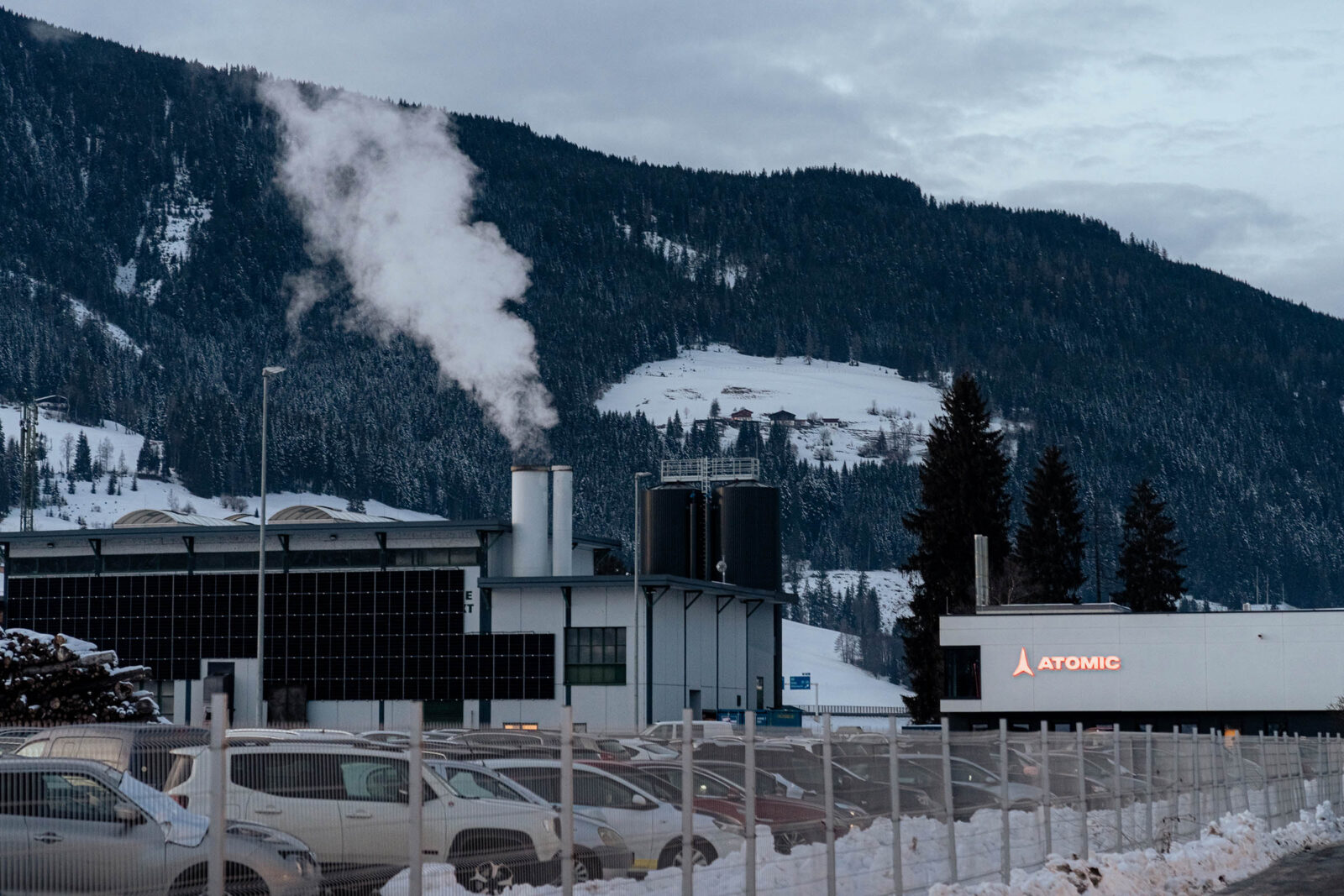
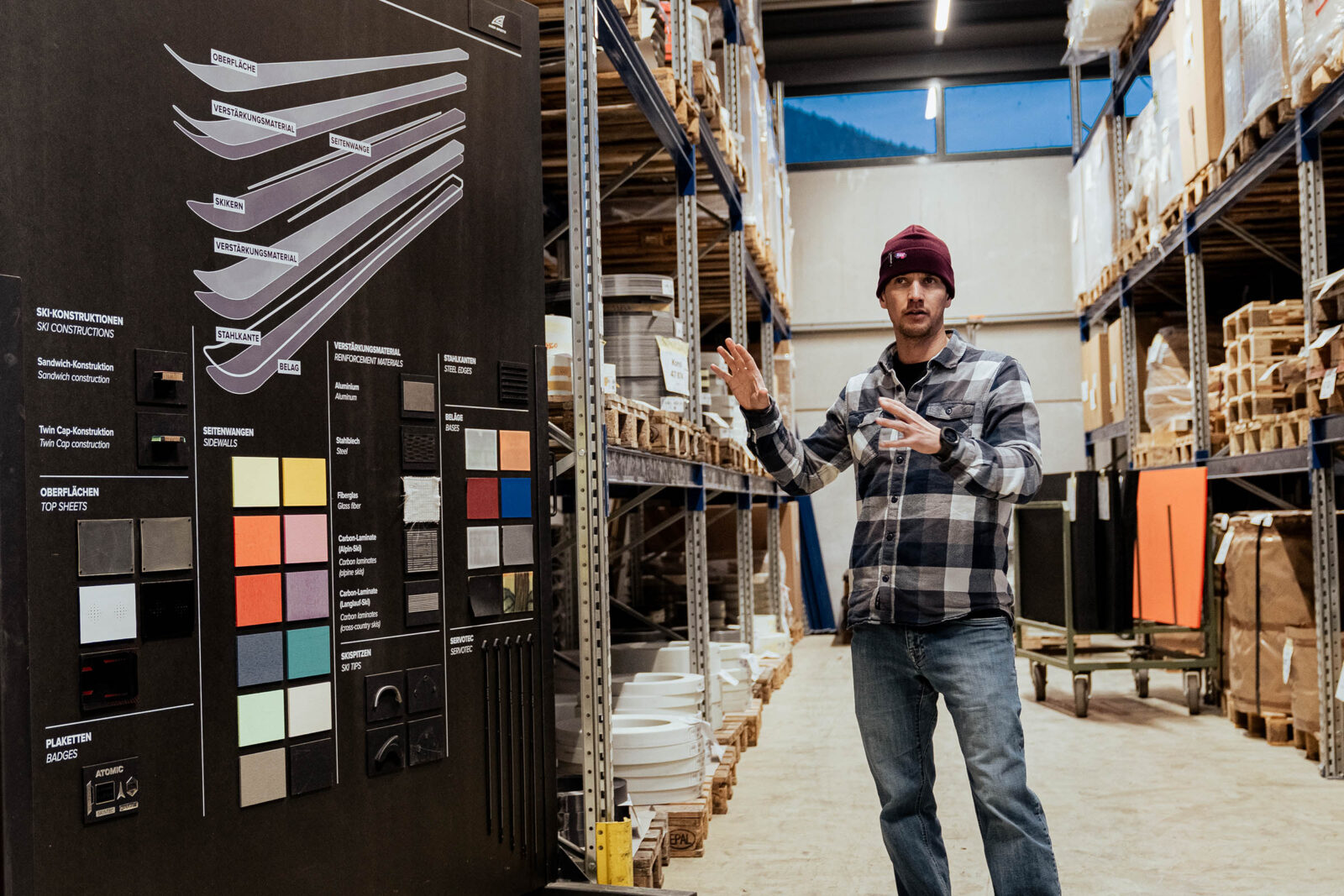
On the factory tour. (bottom) Atomic
Finally, a feature that is unique to Atomic freeride skis is HRZN 3D. HRZN (for “horizon”) is a technology developed together with Chris Benchetler a while ago for the original Bent Chetler ski, which can now be found across all of Atomic’s freeride models. The main aspect is a 3D shaped edge around the tips that increases the surface and provides a non-flat profile to helps the ski to float in deep snow. Depending on which ski series, the HRZN 3D profiles vary slightly. For example, the Backland models use thin, perforated material to save weight, while Mavericks and Mavens use a sturdier version with extra wood. The Bent series includes HRZN 3D in both the tips and tails.
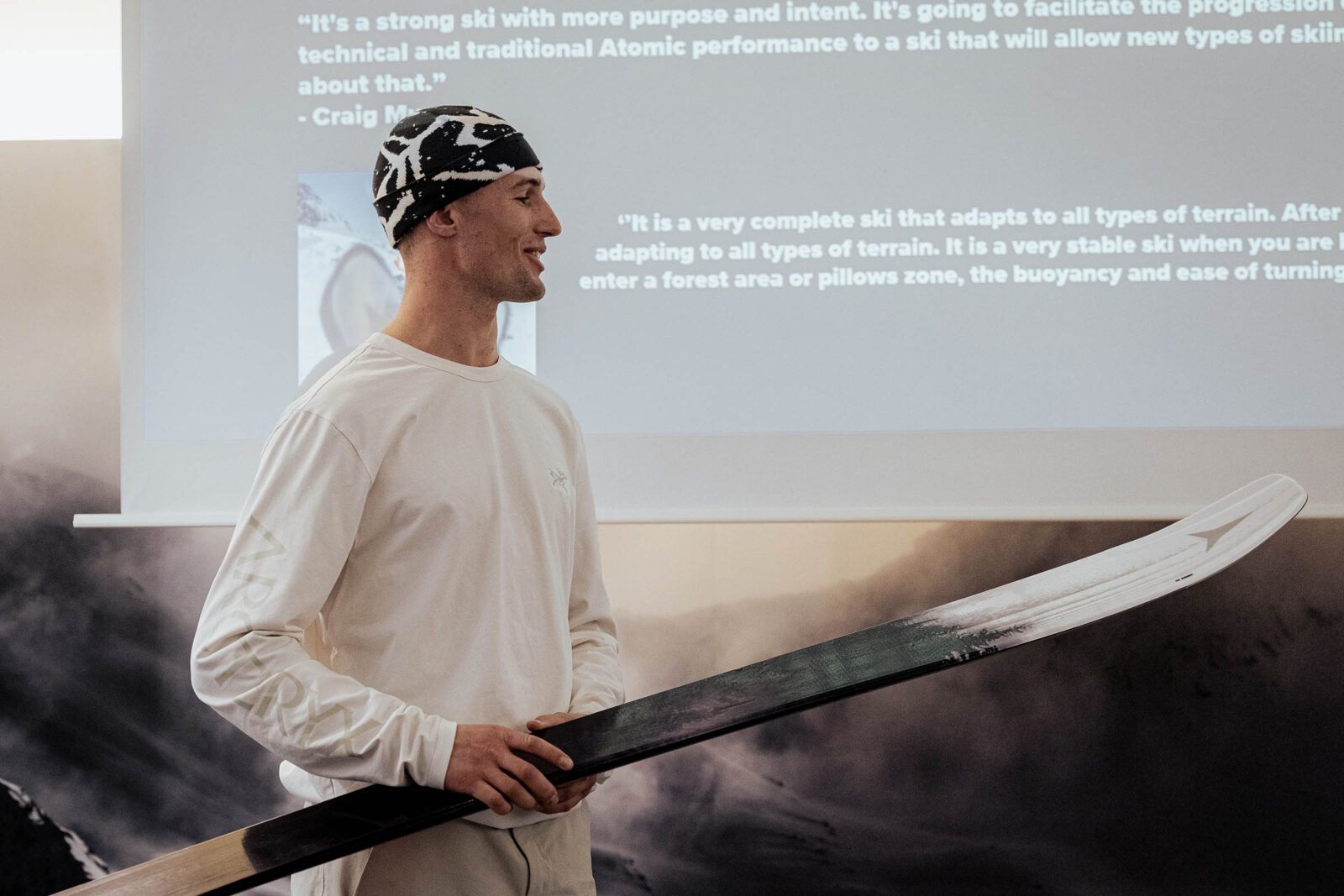
Maverick & Maven
The Maverick 115 CTI and Maverick 105 CTI on the men’s side and the Maven 103 CTI on the women’s side are completely new skis that expand the existing lines into the true freeride realm. They target hard-charging skiers who seek a more traditional ski than the Bent series, or are looking for more support in the challenging conditions that are common in freeride contests, for example. Consequently, these models were developed with skiers like Daron Rahlves, Sage Cattabriga-Alosa, Aymar Navarro, Craig Murray and Henrik Windstedt. The latter two skiers were also present in Altenmarkt and introduced the models to the media, while Amie Engerbretson presented the Maven 103 CTI, which she helped develop together with other female athletes on the Atomic freeride team.


As the CTI suffix suggests, all three skis include a mixture of carbon and titanium to strengthen the otherwise classic sandwich construction based on a wood core. This makes for unparalleled stability at speed in choppy terrain, while also allowing Atomic to reduce the amount of fiberglass and resin in the construction, thus reducing the CO2 footprint. All three models feature a rather traditional mounting point, a radius of 15-20 m depending on model and length, a pronounced rocker and a tapered sidecut profile. The Maverick 115 CTI has a bit more rocker and taper, particularly in the back, which makes it very agile despite its size. It’s therefore also the ski that works best with a rather central mounting point that riders like Craig Murray prefer in order to be able to showcase their arsenal of tricks. The Maverick 115 CTI is available in 177, 185 and 193 cm, while the Maverick 105 CTI comes in 170, 178, 185 and 191 cm lengths.
The Maven 103 CTI (156, 162, 170 and 178 cm) is an original design that was developed with the input of female athletes. It turns out to be not too different from what a scaled-down Maverick might have been, but still has its own unique flex profile and character. Among journalists at the Atomic event, the question came up why there is a dedicated female model in this particular segment while there are none in the Bent series. The answer is that the slightly stiffer flex pattern found in the Maverick and Maven skis walks a finer line between “not enough” and “too much.” The other part of the answer is that athletes like Arianna Tricomi were so happy with the shorter-length versions of the Bent models that the team simply didn’t see the need to develop dedicated female skis in that range.


Bent Family
The celebrated Bent range remains the backbone of Atomic’s freeski segment. The hugely successful Bent models simply saw some minor updates, as Atomic’s designers stayed true to the motto: “Never change a winning team!” From the freeride perspective, the most relevant models are the Bent Chetler 120 and the Bent 110. There’s also the Bent 100, Bent 90 and Bent 85 which are progressively more freestyle-focused skis. The Bent Chetler 120 remains the weapon of choice on big freeride lines for athletes with a strong inclination towards freestyle like Nick McNutt, who presented the Bent family in Altenmarkt. All models have been switched to the aforementioned wood insert instead of a titanium layer for strengthening the mounting zone, and the construction generally incorporates slightly stronger wood cores in order to save on fiberglass and resin and reduce the skis’ carbon footprint. Both the R&D team and Nick McNutt pointed out that these changes don’t compromise at all on performance or the structural strength of the ski. In fact, the damping of the skis is actually improved by the new construction.
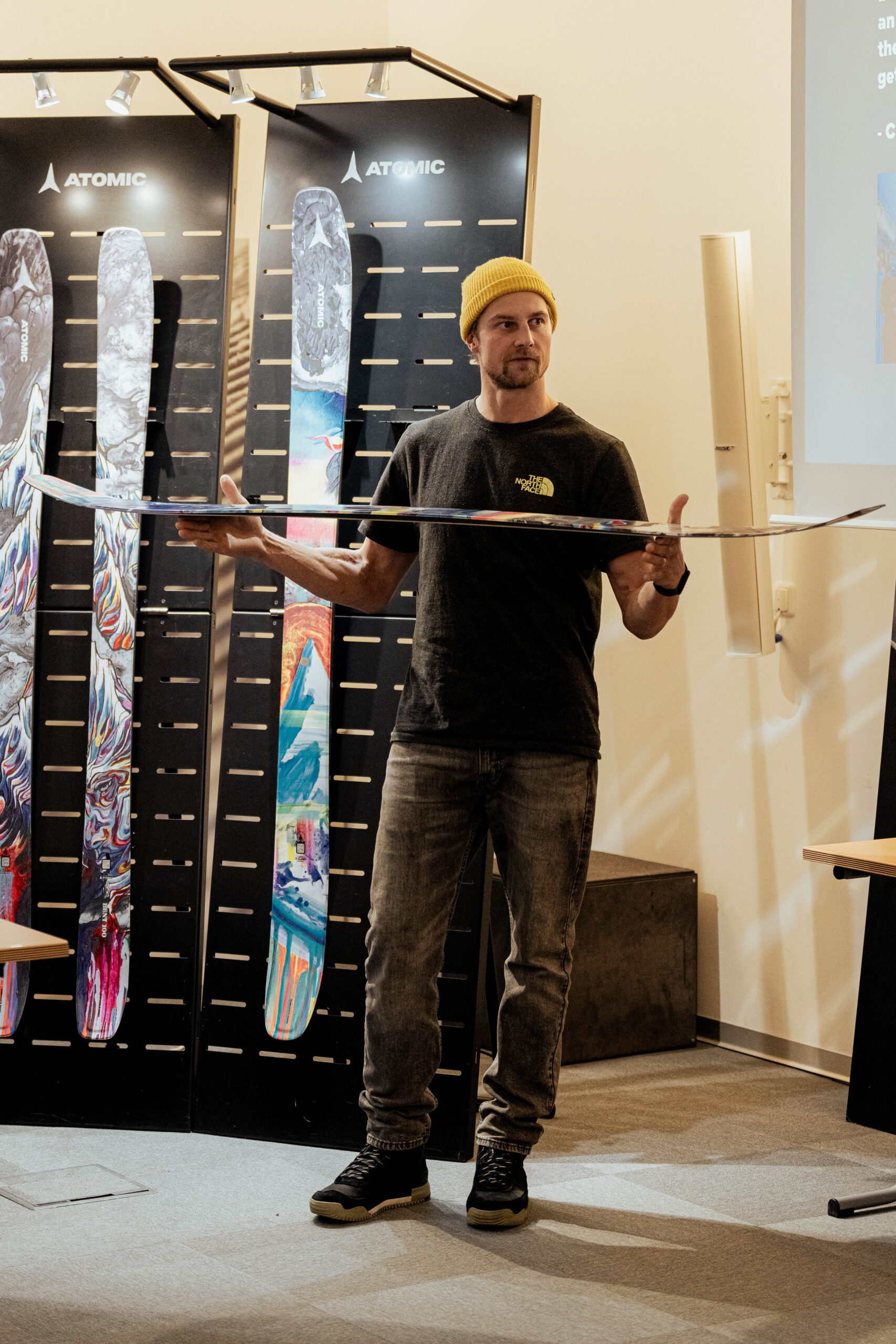

The biggest difference between the Bent family and the Maverick and Maven models is the rather symmetrical outline of the Bents. While the Bent Chetler 120 and Bent 110 aren’t completely symmetrical, the suggested mounting point is not far from the actual center of the ski. The other difference is in the flex pattern, where the Bent family is less stiff in the tip and tail, omitting the carbon and titanium layer of the Mavericks and Mavens. The result is a ski that is more agile in tight terrain and more suitable to any kind of trickery, but which also gives less feedback and a bit less stability when arcing turns, particularly on harder or choppier snow. Otherwise, the camber and rocker profiles as well as the radius between the Bents and the Mavericks & Mavens aren’t wildly different, which is a testament to the Bents’ reputation as great all-round skis for many types of terrain, snow and riding styles.
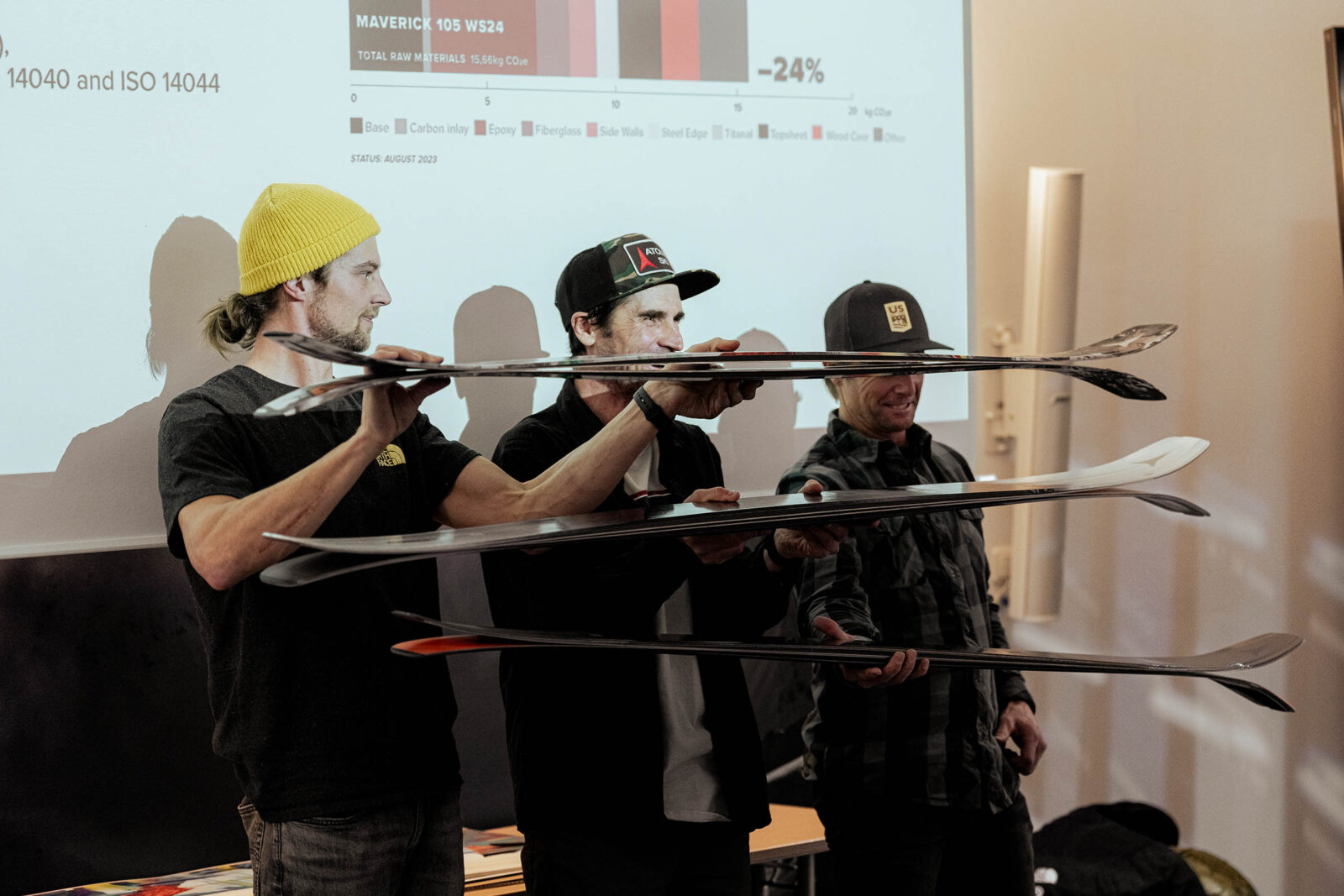
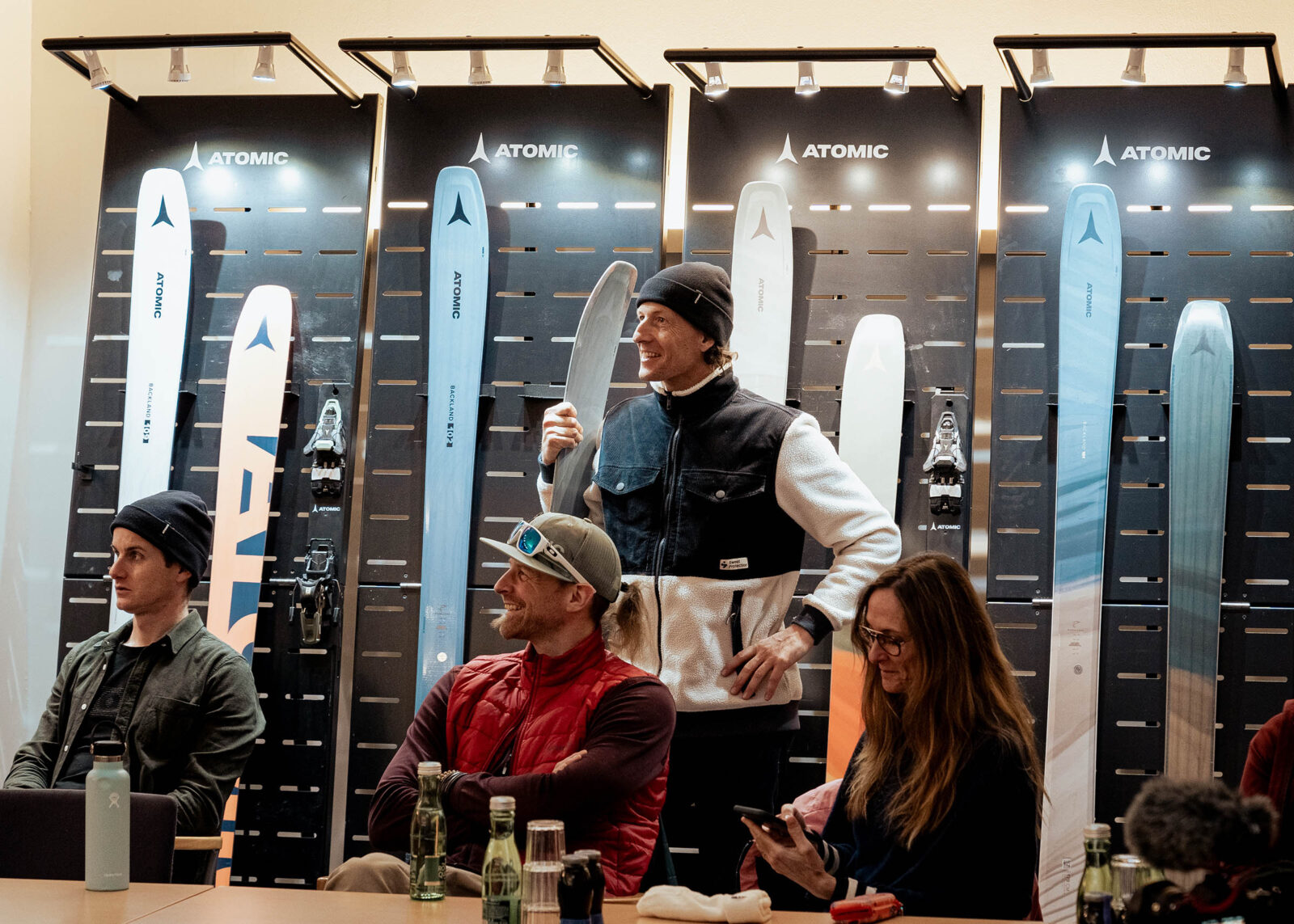
Backland FR
The Backland name is the umbrella for all things touring at Atomic. It’s a big line of skis encompassing everything from ultra-light, thin uphill-racing skis to actual freeride boards that can be walked up the hill fairly easily. The suffix FR indicates all models that have a strong focus on the downhill aspect. Matthias Haunholder introduced the Backland freeride range in Altenmarkt. Hauni, as he is widely known, was hugely involved with the development of the new Backland FR 102, while the main driving force behind the Backland FR 109 was Chris Rubens, who couldn’t make it to Altenmarkt. There are also female specific models with the Backland 108 W and the Backland 101 W.
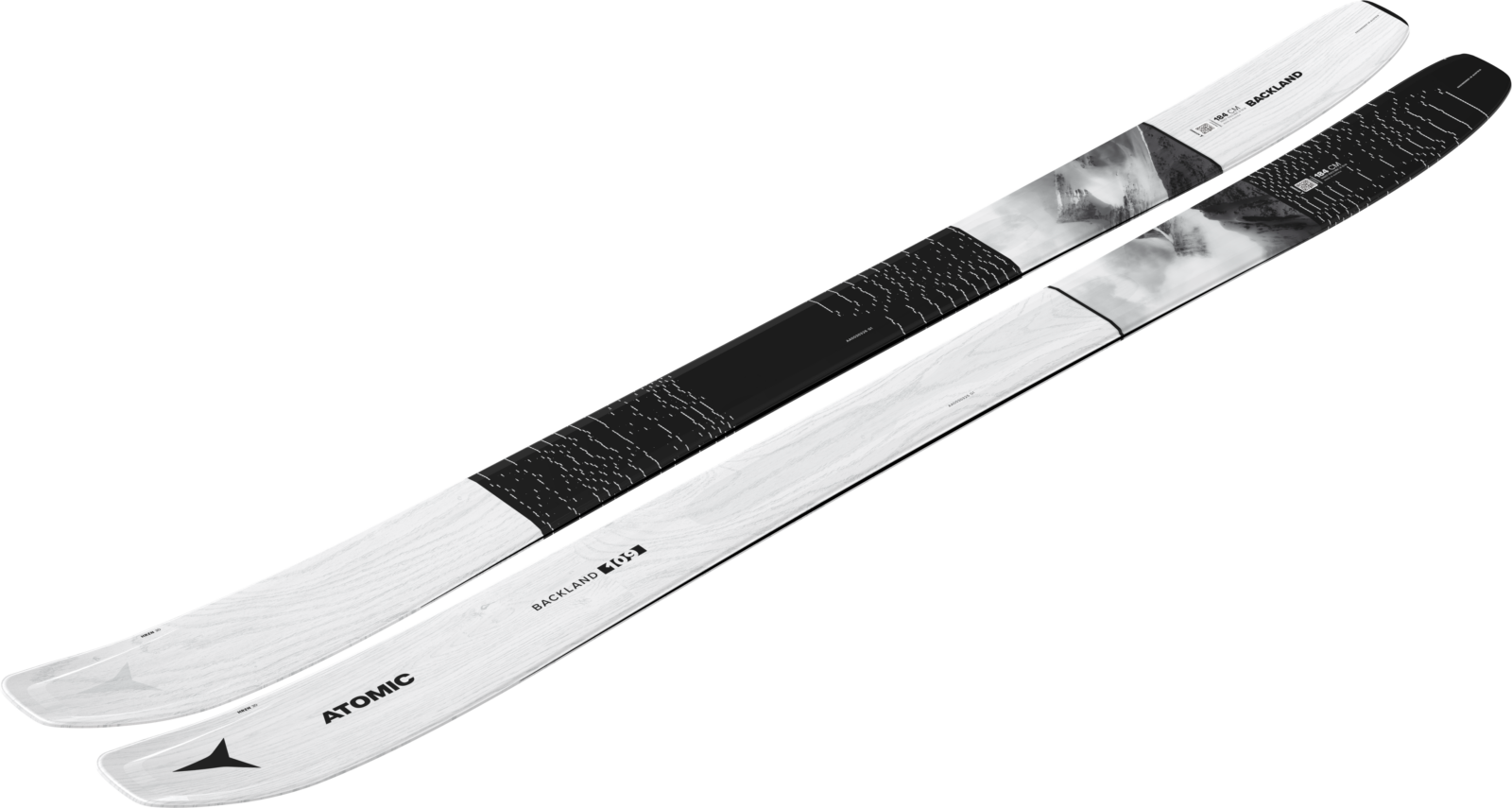
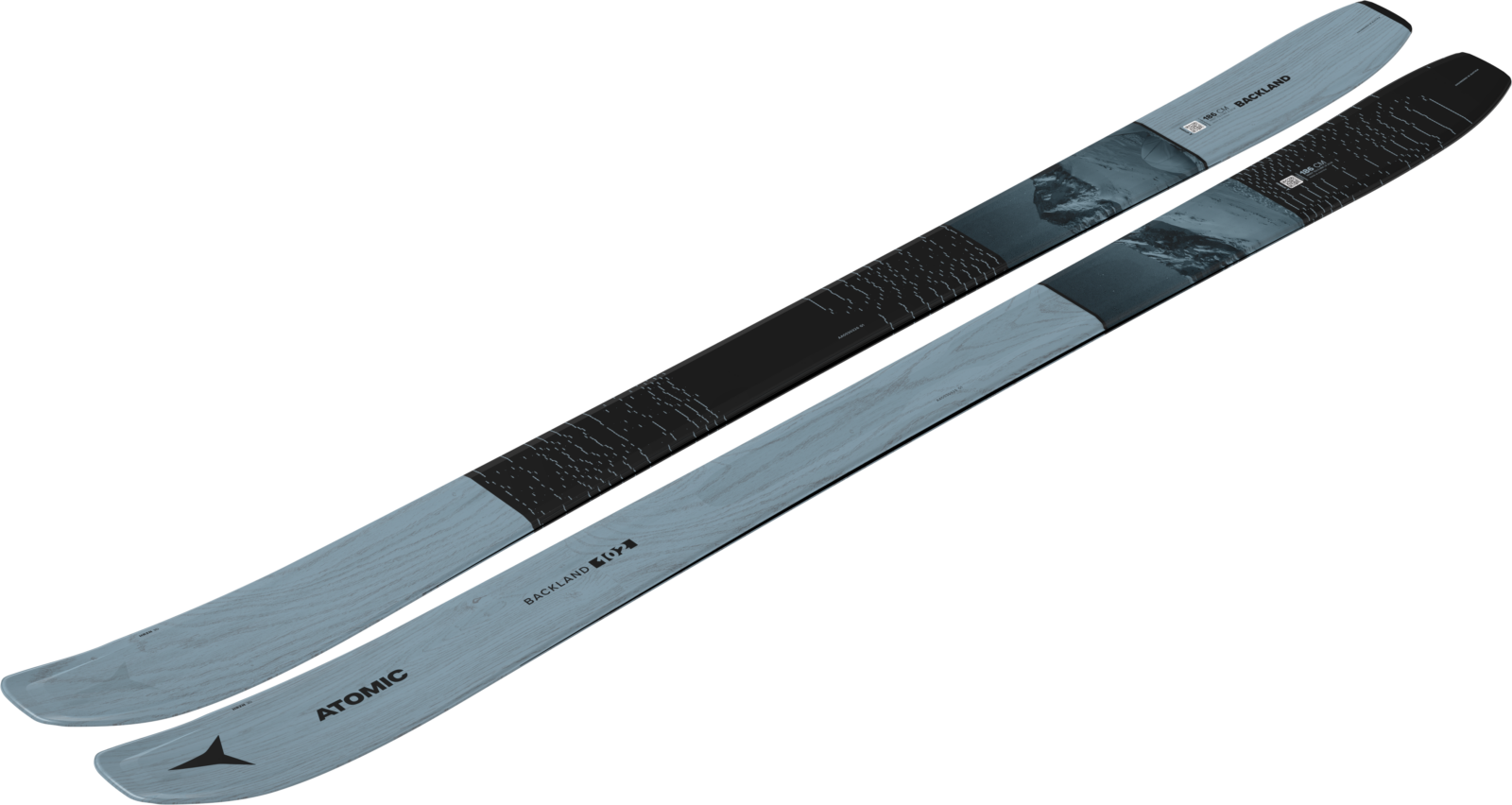
The Backland skis aren’t all that different from the Maverick & Maven models in terms of outline, radius or rocker/camber profile, but they are all built with weight in mind. That means they use lighter wood cores, no heavy metal inserts, and weight-optimized sidewalls and HRZN profiles. All that saves about half a kilo per ski—depending on model and lengths—but costs a bit in stability while skiing, particularly at higher speeds in rougher terrain. Obviously, you can also tour with a Maverick or Maven (in fact, Amie Engerbretson said she preferred the Maven as touring ski over the Backland—it’d be nice to have the endurance of a pro athlete!) but it’s always about balancing the effort you have to put in on the way up versus the power left for the way down.
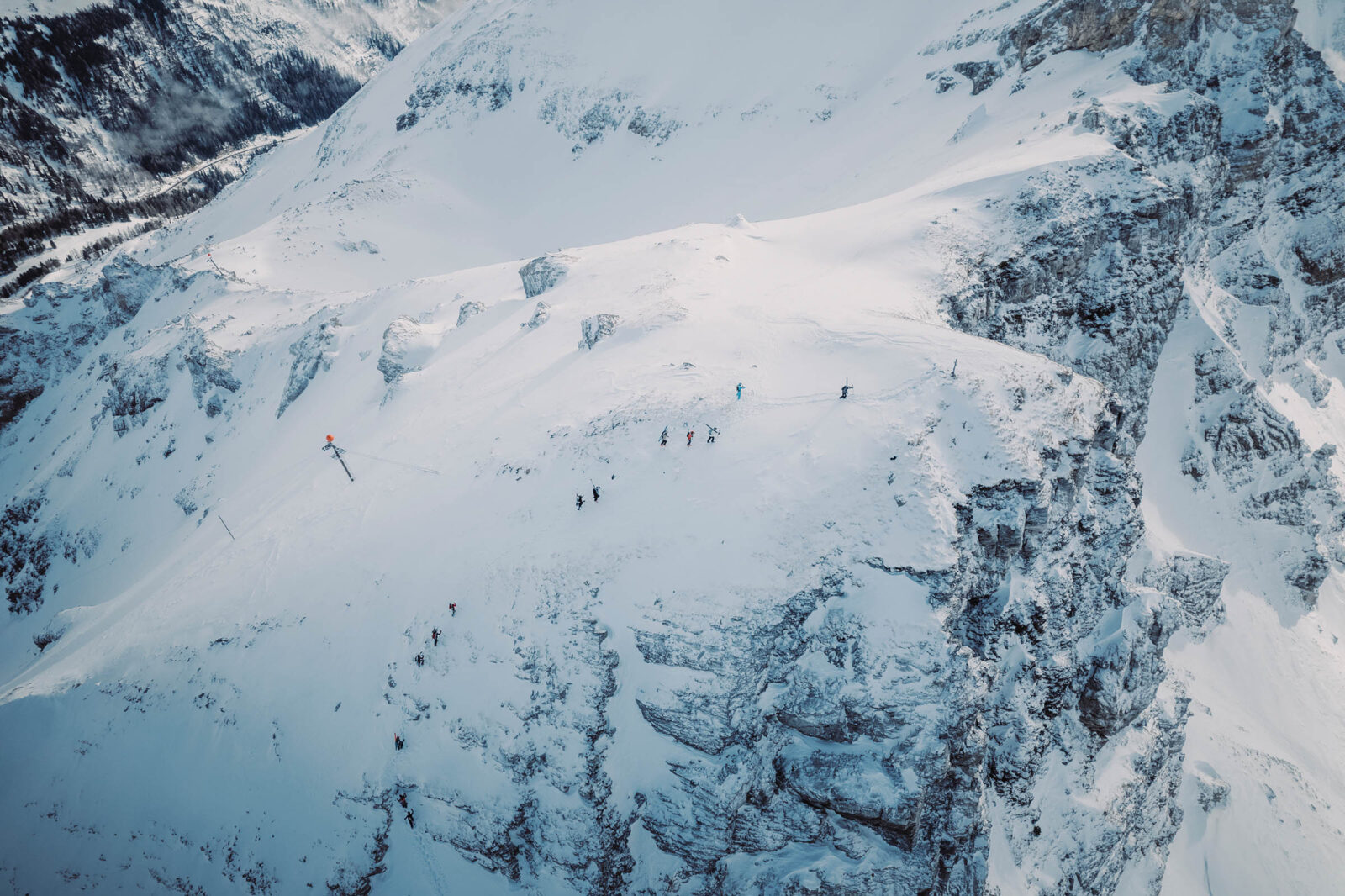
On the snow
The best part of our short stay in Altenmarkt was the day of skiing in nearby Obertauern. With pro athletes and local mountain guides to show us around, we got to try out the new skis on untracked slopes thanks to some fresh snow overnight. I took the chance to test both the Maverick 115 CTI and Maverick 105 CTI, not only because they’re the biggest news in the new freeride lineup, but also since they are skis that fit my personal preferences. I started with the 105 at 185 cm, and was impressed how well it skied on the piste during the warm-up run. Once heading out into the powder and wind-buff snow, the ski kept impressing me with its balance and stability. It performed well in all kinds of terrain and snow conditions, and just took a little extra effort in tight places like in tree lines—a testament to the pronounced tail that gives the ski a more race-oriented feel on piste.
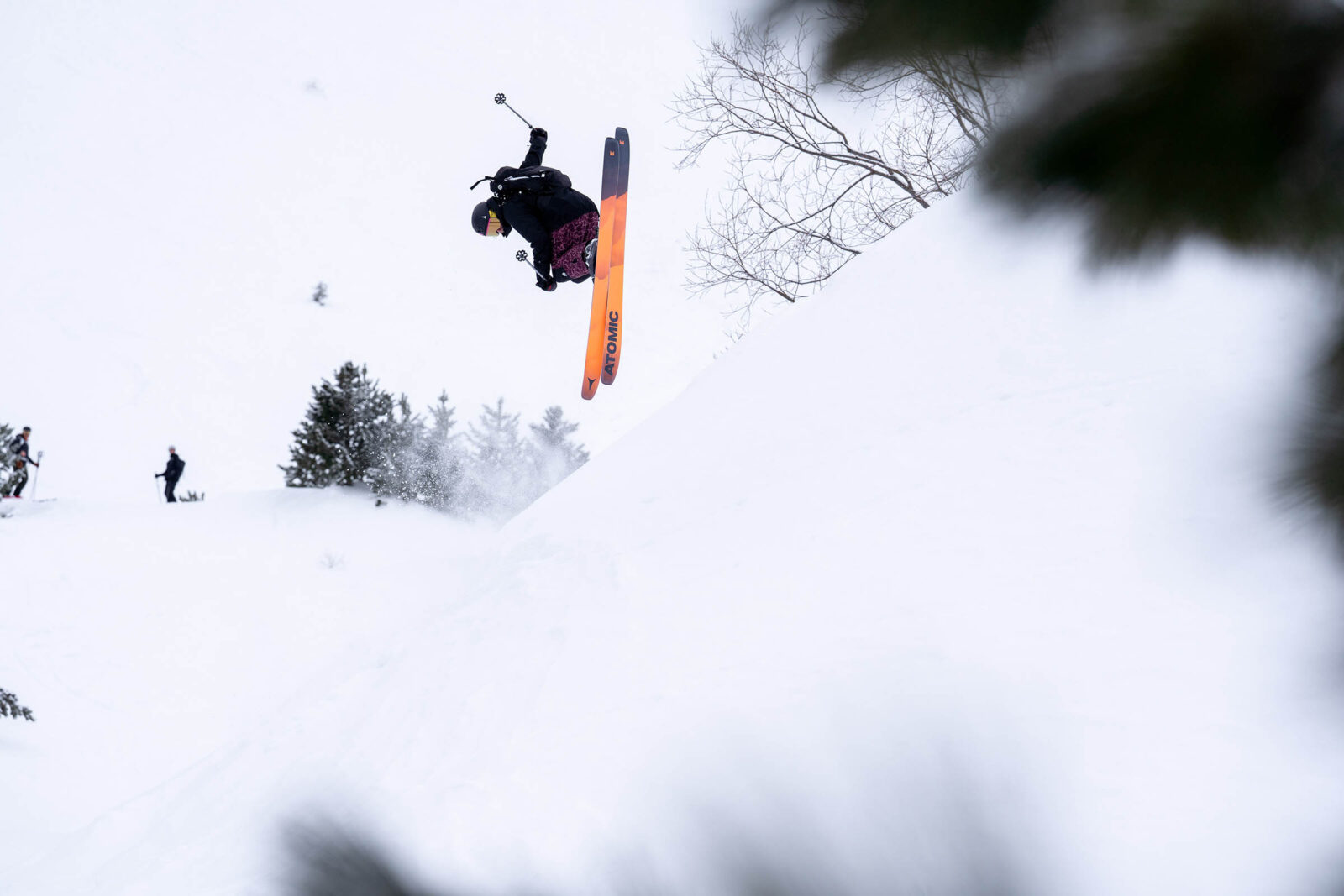
Then I moved on to the 115, also in 185 cm, expecting a ski that would probably float better and be even more stable, but would also need more effort. I was wrong on the latter point: The 115 actually skied more effortlessly in tight terrain, probably due to the more pronounced rocker at the tail. Of course, it floated effortlessly in deep snow and kept its calm remarkably well even when unexpectedly hitting some rough sections. I felt right at home on the ski, with no need to adapt. Of course, it was only a short time on each model and your personal preferences may differ, but in case you are a freerider looking for a more traditional type of ski, I don’t think you can go wrong with the Maverick 115 CTI. I would also recommend taking the 115 over the 105, unless your skiing profile is mainly piste and freeride adventures are only a second thought. The 115 will also serve you well on piste except in the iciest conditions where the big width will probably make itself felt. Either way, Atomic definitely made the right choice to restructure their freeride lineup in that specific segment, and the combined efforts of the R&D department and the athlete team paid off.
see more
www.atomic.com